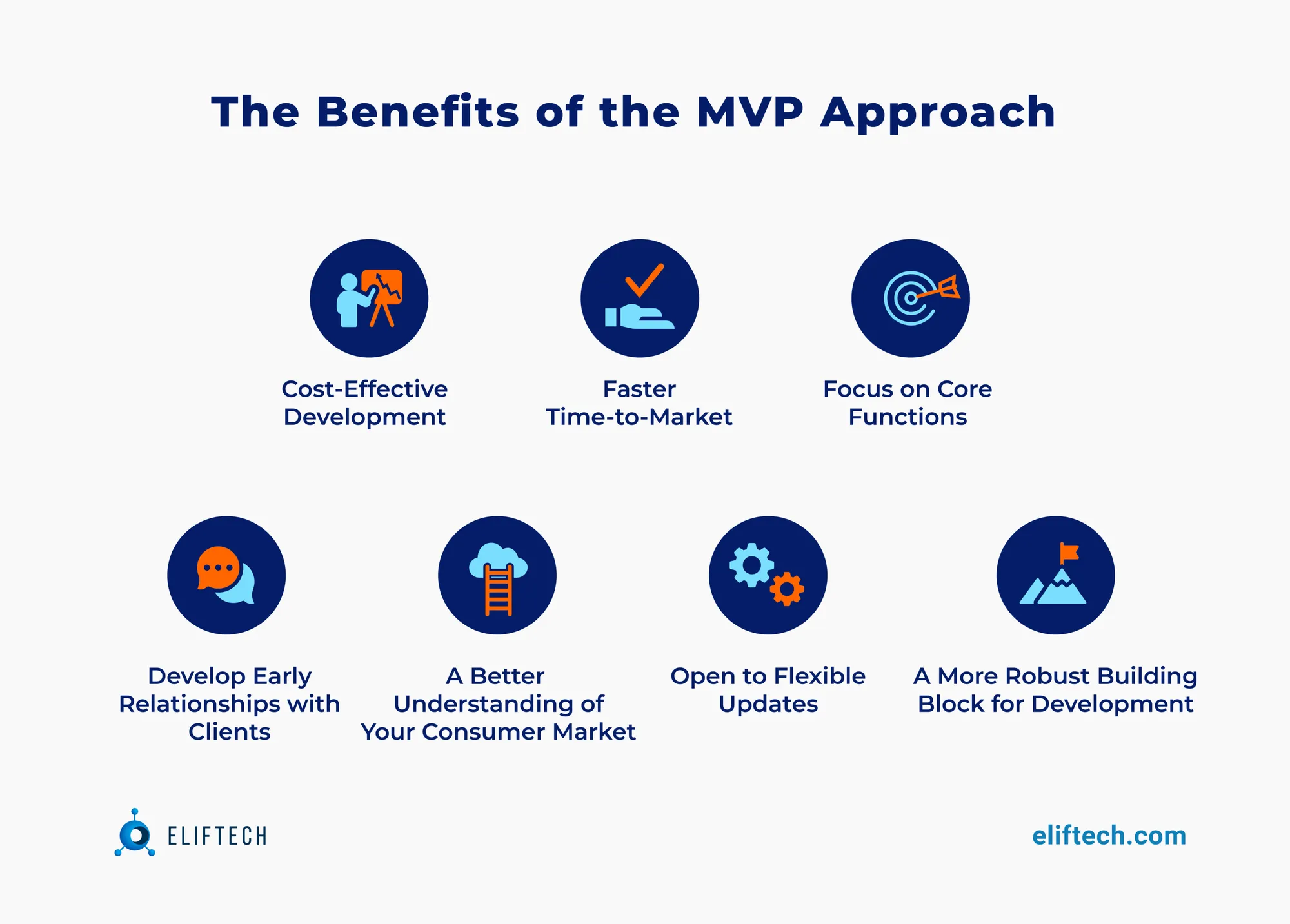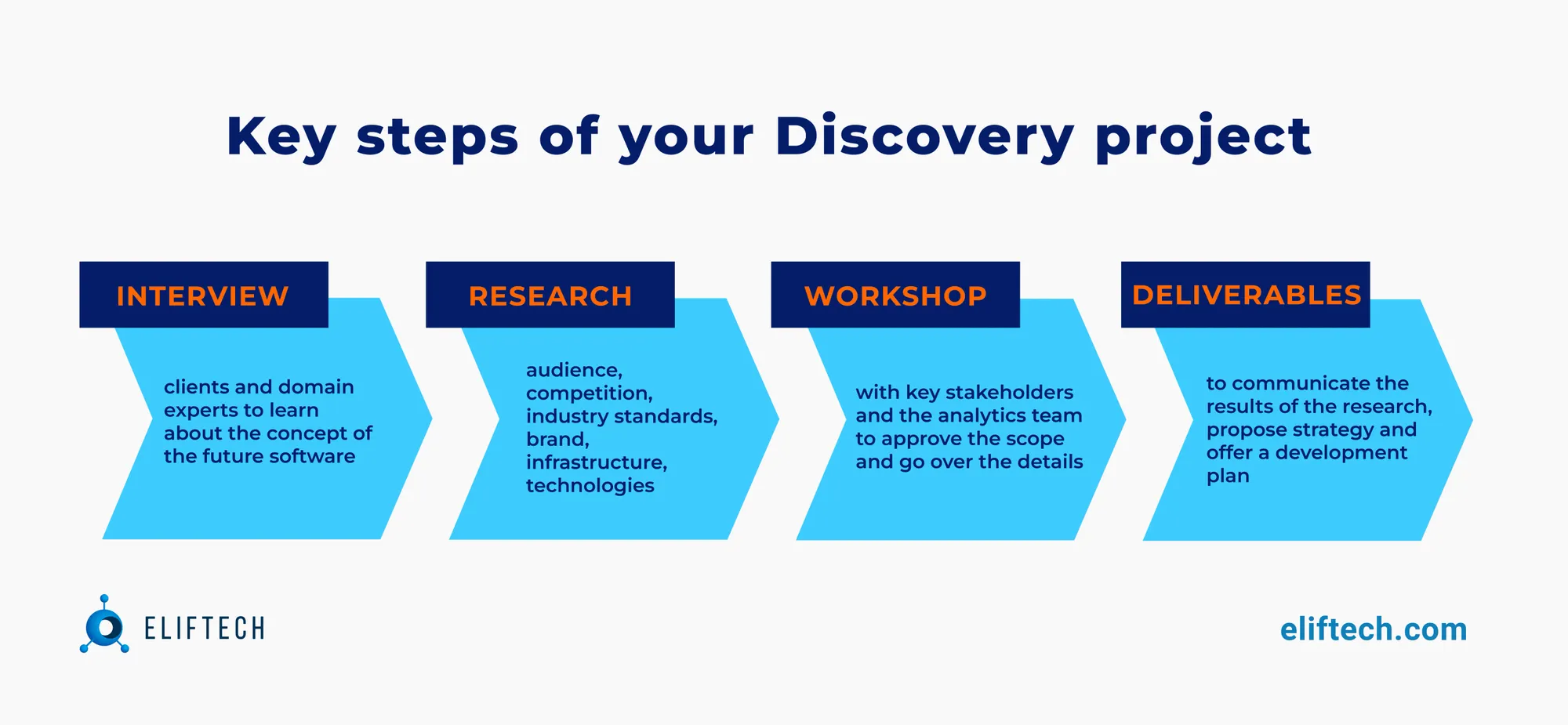Startup
Bridging the Gap between the Discovery and MVP Phase for Startup Success

In the highly competitive world of startups, success often hinges on the ability to bring innovative ideas to market quickly and efficiently. Nevertheless, this task is more challenging than it may seem. It requires startups to navigate a complex journey from idea conception to product launch. Many startups struggle to survive, with only a fraction making it beyond the first year of operation. In fact, most of them fail because there is no market need for their product.
One critical phase in this journey is the discovery stage, which involves rigorous research, analysis, and testing to validate ideas and generate insights that inform the development of a Minimum Viable Product (MVP). Despite its importance, transitioning from the discovery stage to the MVP phase can be challenging, and many startups struggle to bridge the gap between these two critical stages.
How to Connect Discovery and MVP Phase for Startup Success?
In this article, we will explore the discovery stage and its role in startup success, discuss the power of MVPs in accelerating growth, and present a streamlined roadmap from discovery to MVP launch that highlights the critical steps and considerations.
Discovery Stage & Its Role in Startup Success
The discovery stage is an integral part of any startup's journey toward success. It refers to the initial stage where startups define and validate their ideas, identify target customers, and explore various approaches and strategies to implement their solutions. The primary aim of the discovery stage is to understand the problem space, create a unique value proposition, and lay the foundation for a successful MVP stage.
Skipping the discovery stage may seem like a time and cost saver, but in reality, it's a misguided approach. Proper discovery allows businesses to grasp their customers' needs and develop targeted solutions to improve their experiences. By conducting a thorough IT discovery process, you can better organize the development process and ensure that you align customer needs with your business goals. Don't underestimate the strategic importance of investing in discovery for maximum efficiency and user satisfaction.
Key Goals of the Discovery Stage:
- Set business goals: The first step of the discovery phase is to create a product scope, the product’s requirements, and business goals. These goals should be essential to the product's success and kept in mind throughout the development process. Moreover, it is crucial for business owners to understand what they want to achieve with their products and manage their expectations realistically.
- Understand what a successful outcome looks like: Defining the requirements, functionality, and success criteria for the product is vital to its success. Business owners should define how many goals will be enough to achieve a successful result. For instance, if you strive to reach 100% of your goals, 70% of them might be enough to satisfy your initial requirements.
- Study your users: User research is the foundation of a successful product as it enables developers to understand users' needs and wants. During the discovery stage, you should analyze what motivates your target audience to use your product, what features they find valuable, and how they navigate and interact with your product. The findings of this research will facilitate the creation of a product that accurately fulfills the user's requirements and criteria.
- Map the customer journey: Customer journey mapping helps identify the main touchpoints that users interact with and anticipate the difficulties they might encounter along the way. This will help create a product that is easy to use and ensure that user experience is positive.
- Analyze the competitors: In the discovery stage, it's crucial to conduct a comprehensive evaluation of your competitor's strengths and weaknesses. This assessment will enable you to identify the void in your industry and determine how your product can satisfy it. Additionally, it will help you shape your Unique Value Proposition and differentiate your offering from that of others in the market.
During the discovery stage, startups employ various methodologies and techniques to gather information, understand user needs, and test assumptions. These include customer interviews, surveys, competitive analysis, market research, analytics, user testing, and prototyping. These methods help startups to prioritize their ideas, understand the dynamics of their target markets, and reduce the risk of building a product that no one wants or needs. By continuously testing and validating their ideas, startups can ensure that they are on track to build a product that solves real problems and meets customer needs.
The discovery stage plays an essential role in the success of a startup. It can help you identify and validate your ideas, define your MVP, and establish a strong foundation for future growth. With the right methodologies, techniques, and experienced software development partner, you can navigate this critical stage successfully, reduce risk, and ultimately deliver a highly successful product that solves real problems for its users.
The Power of Minimum Viable Product (MVP) in Startup Growth
What is MVP in software development?
MVP in software development stands for Minimum Viable Product. It's a technique widely used among startups seeking to validate their business idea. The MVP is a bare-bones version of the main product, featuring only the essential functionalities. This technique allows developers to launch the product as quickly as possible in the market. By doing so, they can gather feedback from their customers in real-time, identifying what works and what doesn't.
The power of the MVP lies in its ability to help you identify the most significant risks and assumptions quickly. By creating a lean, stripped-down version of the product, you can focus on its most essential features and test them in a real-world setting. Armed with this feedback, you can then refine and improve your product over time, leading to a faster, more iterative development process.
Perhaps the most significant advantage of the MVP is its ability to accelerate startup growth. By releasing a basic, functional version of a product, startups can begin generating revenue and building a customer base much earlier in the development cycle. This early traction can then be used to attract investors, hire new employees, and fuel further development.
Read more: How to Get Funding for a Startup?
The MVP phase also helps startups avoid the common pitfalls of product development, such as building too many features at once or completely misreading their target audience. With an MVP, you can test the waters before fully investing in a new product, potentially saving yourself significant time and resources in the long run.
Of course, creating an MVP isn't always easy. You must be willing to make tough decisions about which features to include and which to cut, all while keeping a laser focus on the core assumptions. They must also be willing to gather feedback repeatedly and iterate quickly, which may require a significant amount of time and effort.

The power of the MVP phase cannot be overstated. By embracing lean development principles and focusing on the most critical aspects of a product, you can validate ideas quickly, build early traction, and accelerate their growth trajectory. As such, the MVP has become a go-to tool for startups across a wide range of industries and markets, helping turn bold ideas into successful, profitable businesses.
Why Do You Need a Discovery Phase Before an MVP Phase?
The discovery phase is an essential prerequisite to building an MVP. So, why is discovery important?
- Scope Clarification
Before commencing MVP development for startups, the discovery phase enables a comprehensive comprehension of the scope, objectives, and requirements of the project. Market research, user needs analysis, and problem definition are central to this. This phase helps identify potential roadblocks, fine-tune your product concept, and establish an MVP software development foundation.
- Risk Mitigation
A software discovery phase reduces the likelihood of unexpected challenges surfacing during MVP phase development. Research, feasibility evaluations, and prototyping identify potential technical, operational, or market-related risks, enabling proactive measures that reduce potential costly setbacks and guarantee a smoother development process.
- User-Centered Design
This phase provides the chance to know your target audience well, studying their needs through user research, personas, and usability testing. This gives insights into their behaviors, preferences, and areas they find problematic. This knowledge empowers informed decision-making on MVP design that aligns with user expectations and attains traction in the market.
- Feature Prioritization
Developing an MVP depends upon making wise strategic choices about which features to release initially. Discovery management enables adherence to business objectives while aligning development resources. The core features that deliver the most value to your user's demand prioritization to create an efficient MVP addressing the project's critical aspects.
- Realistic Expectations
The discovery phase helps establish realistic expectations for the development team and stakeholders. Detailed analysis and estimation provide clarity on time, resources, and budget required for MVP developmental success. This aligns everyone around the project's scope, limitations, and potential outcomes, minimizing conflicts or misunderstandings later in the development process.
The discovery phase is pivotal to MVP phase development as it enables a structural perspective of the project, minimizing risks, prioritizing features, and aligning the product with the user's needs. Investing time and effort into this phase positively impacts MVP creation and prepares you for further product iterations and growth.
Read also: The Complete Guide to Agile Software Development Life Cycle for Startups
Streamlining Success: 4 Steps from Discovery to MVP Launch
At ElifTech, we have perfected a comprehensive product discovery process that sets the stage for a seamless transition from ideation to the launch of your MVP. Let's explore the key steps involved in our Agile product discovery approach:
Step 1: Product Alignment
During the first stage, we aim to align all stakeholders from various domains and management levels to define the core problem and gather relevant information to create an effective solution. We prioritize communication and collaboration to encourage clients and team members to articulate problems and goals without prematurely suggesting solutions.
To facilitate this process, our team employs the lean canvas framework, evaluating the market, identifying issues to be addressed, defining the value proposition, and assessing competitors. This analysis allows us to identify unique competitive advantages and create value propositions that attract customers to your product.
Step 2: Conducting Research and Requisition
After obtaining an in-depth comprehension of key stakeholders' problems and objectives, we proceed to investigate possible market opportunities by assessing the actual demands and pain points of potential customers. Our comprehensive approach to research includes market analysis, competitor analysis, target audience analysis, and segmentation.
By critically analyzing market size, growth potential, market trends, and key players, we obtain valuable insights that inform our strategic decision-making process. Through conducting a thorough assessment of our competitors, we identify their strengths, weaknesses, and the value they offer to customers. This enables us to discern yours's distinctiveness and define its selling points.
Furthermore, by analyzing the characteristics of your potential purchasers, we create buyer personas, which provide an in-depth understanding of your customers' behaviors, needs, and preferences.
Step 3: Finding a Solution
Having thoroughly explored the problem space, we shift our focus to developing a solution. We encourage individual ideation before engaging in group discussions to avoid falling into existing stereotypes or settling for mediocre ideas. Leveraging the findings from the research phase, we define a complete and detailed business model for your solution based on the lean canvas framework.
We also create a solution concept description, outlining the value proposition and major functions that form the foundation of your product strategy. By defining user roles and mapping typical user journeys, we ensure that the solution caters to various user types and their specific needs. Additionally, we provide an in-depth functional decomposition of the solution through a product feature breakdown list.
Step 4: Planning
Accurate estimations and a solid implementation plan are crucial to ensure a successful transition from ideation to development. At our multidisciplinary team, we collaborate extensively to provide accurate estimations and design a comprehensive implementation plan.
Our team of experienced business analysts, engineers, designers, and QA specialists work diligently to estimate the effort required for prioritized product features and design scope for the MVP phase. We consider the most suitable technology stack, recommend post-MVP scope, define the project team structure and schedule, estimate the cost for MVP and full product development, and suggest the most appropriate AWS hosting plan that allows for seamless deployment.
We also prioritize client onboarding to ensure a smooth transition from discovery to implementation. This includes ensuring that all clients are comfortable with the discovered solutions and understand all the findings to guide them in making informed decisions.

Note the product discovery process is frequently non-linear, requiring multiple repetitions of its stages to achieve the intended outcomes.
Bridging the Gap between Discovery Stage & MVP with ElifTech
Well-thought-out product discovery and delivery processes are essential for success in quickly matching market demands with products that meet customer needs. When you’re able to get an accurate overview of the market, customer pains, needs, wishes, and behavior and apply it to your development process upfront, the guessing game is over: You can turn those findings into solutions that will fit customers’ needs and help you reach your business goals.
To gain an edge against the competition, it’s key that usability, architecture, engineering team size, and velocity match up—and must be implemented throughout an entire lifecycle for continuous improvement.
With ElifTech at your side, you can leverage comprehensive technology support to create solutions rapidly so you never miss out on industry trends. Would you like to apply this continuous success formula to your next product?
Contact us for a free kick-off consultation.
